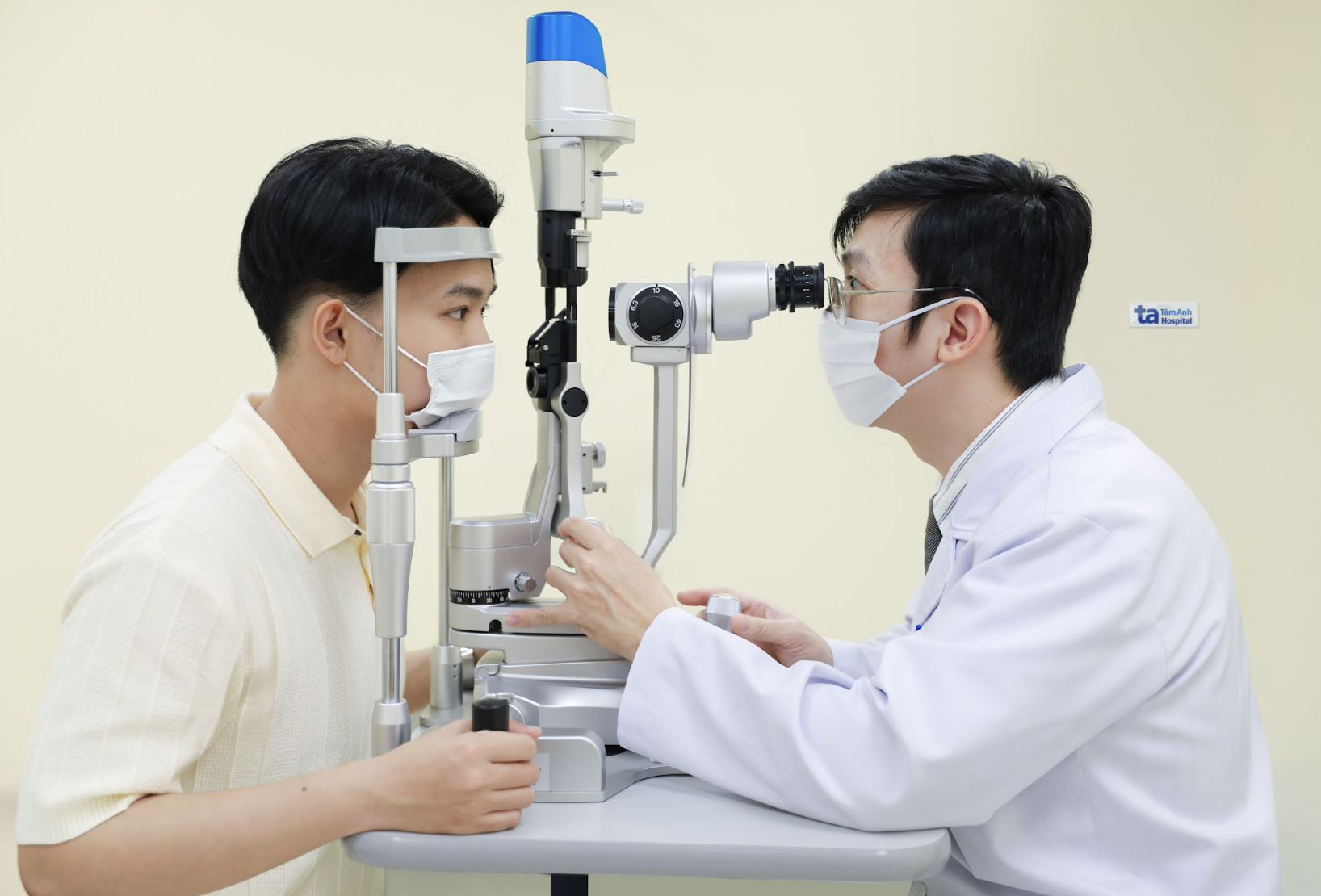A normal lens is transparent, allowing light to focus on the retina to create clear images. However, over time or due to medical conditions, proteins in the lens can denature, losing their biological function and clumping together to form opaque patches. Light passing through these patches scatters or fails to focus correctly, resulting in blurred vision, glare, or reduced contrast.
Doctor Tang Ngoc Anh, Deputy Head of the Ophthalmology Department at the High-Tech Eye Center, Tam Anh General Hospital in Ho Chi Minh City, explains that cataracts develop slowly and painlessly, often going unnoticed in the early stages. Therefore, individuals at high risk should be vigilant.
Older adults, particularly those over 60, are at the highest risk. The risk increases significantly with age due to natural aging processes that denature lens proteins and reduce transparency.
People with diabetes are also at high risk. Prolonged high blood sugar causes glucose to convert into sorbitol, which accumulates in the lens, causing swelling and deformation. Cataracts in individuals with diabetes often appear earlier, progress faster, and carry a risk of retinal damage, impacting the outcome of surgical treatment.
 |
A doctor examines the eye structure of a man. Photo: Tam Anh General Hospital |
People on long-term corticosteroid treatment, in any form (eye drops, oral, injection, or inhalation) for conditions like asthma, rheumatoid arthritis, or lupus, are at risk of posterior subcapsular cataracts. This is a specific type of cataract that forms in the central area of the lens, significantly affecting vision.
Prolonged exposure to ultraviolet (UV) light accelerates oxidation and damage to lens proteins, particularly in those working outdoors, such as farmers, fishermen, and construction workers. Not wearing sunglasses increases the risk of developing cataracts early.
People with a history of eye trauma, whether blunt or penetrating, are at risk of developing cataracts due to damage to the anterior capsule, posterior capsule, or lens suspension system. Doctor Ngoc Anh notes that some injuries may initially appear minor but can still destabilize the lens suspension, causing slight displacement or changes in the internal structure of the lens nucleus. These changes can progress silently for years before causing noticeable cataracts.
Smoking and excessive alcohol consumption can accelerate the development of cataracts, such as nuclear and cortical cataracts, by increasing free radicals that cause oxidative damage to eye structures, including not only the lens but also the retina.
Congenital cataracts can occur in newborns due to genetic mutations, congenital metabolic disorders, or viral infections during pregnancy, particularly rubella. Individuals with a family history of early-onset cataracts, even without congenital cataracts, are at higher risk and should undergo regular screenings from middle age.
Other contributing factors include obesity, high blood pressure, nutritional disorders, or previous eye surgery (retinal or glaucoma surgery), such as intraocular interventions, laser treatment, or secondary lens trauma following surgery.
To prevent and detect cataracts early, Doctor Ngoc Anh recommends regular eye exams at reputable hospitals from the age of 40, especially for those with risk factors. Managing blood sugar and blood pressure, and using corticosteroids as prescribed can slow cataract progression. Protecting eyes from UV rays by wearing UV400 sunglasses outdoors, quitting smoking, reducing alcohol consumption, and including antioxidants like vitamins C and E, lutein, zeaxanthin, and omega-3s in the daily diet are also recommended.
Nhat Thanh
| Readers can submit questions about eye diseases here for doctors to answer. |












